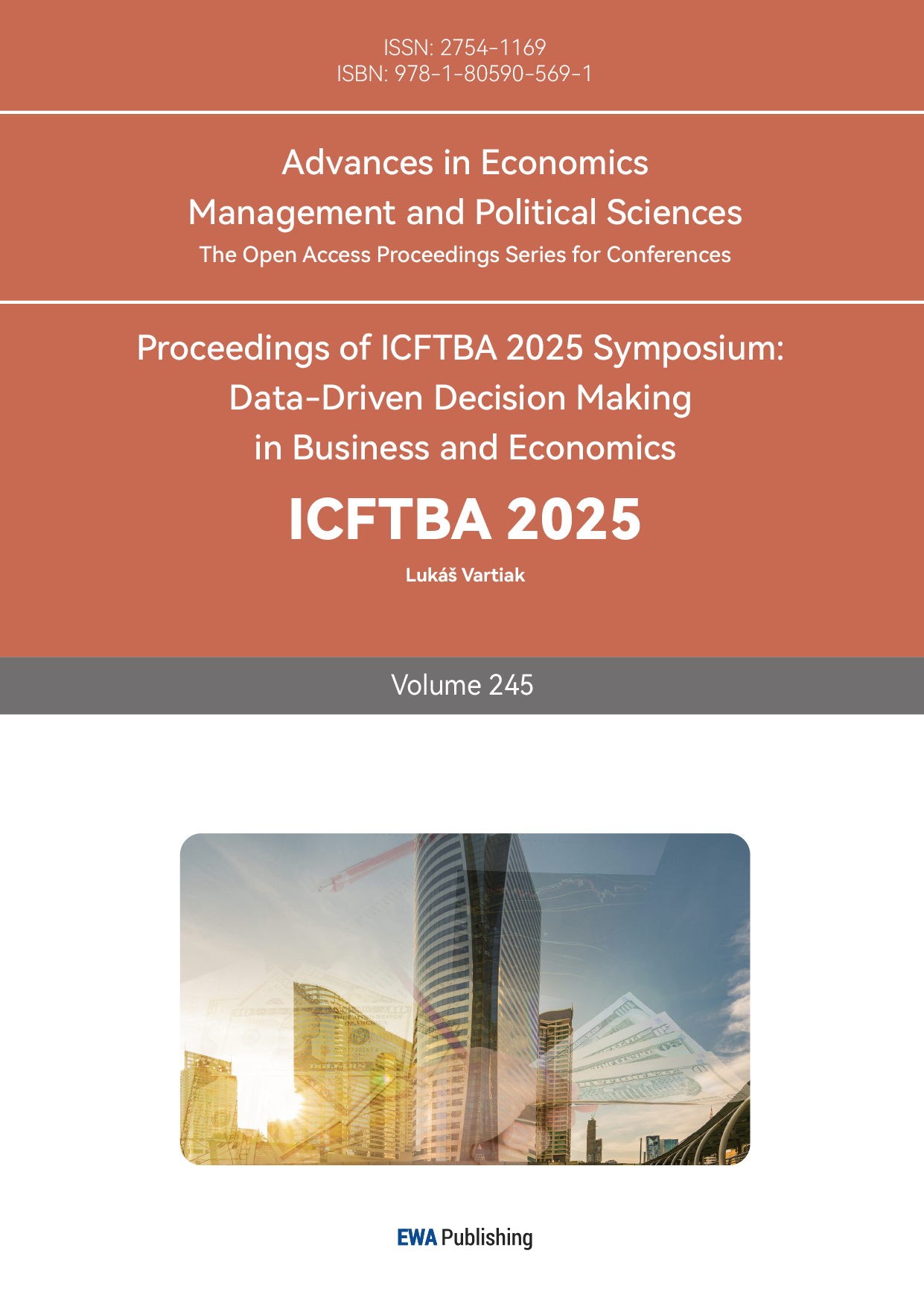References
[1]. Chen, Y., Wang, H., & Zhang, Q. (2022). The impact of product homogenization on consumer purchase intention: Evidence from the sugar-free beverage industry. Journal of Consumer Behavior, 27(3), 456–468.
[2]. China Beverage Industry Association. (2021). China sugar-free beverage market development report 2021. Beijing: China Light Industry Press.
[3]. China Beverage Industry Association. (2023). China sugar-free beverage market data analysis 2023. Beijing: China Light Industry Press.
[4]. China National Food Industry Association. (2022). Annual report on China's food industry development 2022. Beijing: China Food Press.
[5]. China Report Hall. (2024). 2024–2029 China sugar-free beverage industry research and market forecast report. Shanghai: China Report Hall Press.
[6]. Euromonitor International. (2022). Global beverage market trend analysis 2022. London: Euromonitor International.
[7]. Euromonitor International. (2023). Global sugar-free beverage market report. London: Euromonitor International.
[8]. Food and Drug Administration. (1969). Ban on cyclamate as a food additive. Washington, D.C.: FDA.
[9]. Grembecka, M. (2021). Natural sweeteners: Properties, applications, and health effects. Food Chemistry, 347, 129012.
[10]. Guangming Net. (2023). Experts: Erythritol-cardiovascular risk study shows correlation not causation. Retrieved from http: //m.toutiao.com/group/7205861844064895547/
[11]. Jeon, S. H., et al. (2022). Allulose: A novel sugar substitute with health benefits. Journal of Food Science and Nutrition Research, 61(2), 89–96.
[12]. Kotler, P., & Keller, K. L. (2022). Marketing management (16th ed.). Pearson.
[13]. Li, J., et al. (2020). The impact of product health attributes and taste on purchase intention of sugar-free beverages. Chinese Journal of Marketing, 17(4), 32–41.
[14]. Liu, X., et al. (2023). Consumer cognition and misunderstanding of sugar-free beverages. Journal of Consumer Studies, 10(2), 78–85.
[15]. Porter, M. E. (2021). Competitive strategy: Techniques for analyzing industries and competitors (7th ed.). Free Press.
[16]. Rogers, G. F., et al. (2023). Gastrointestinal effects of erythritol consumption in healthy adults. Nutrition Research, 114, 109–116.
[17]. Swithers, S. E. (2018). Artificial sweeteners and metabolic health: A review. Current Diabetes Reports, 18(12), 71.
[18]. State Administration for Market Regulation. (2023). Supervision and inspection report on sugar-free beverage market 2023. Beijing: SAMR.
[19]. Statista. (2023). Global sugar-free beverage market size 2023. Hamburg: Statista.
[20]. Sun, Y. (2022). Green packaging innovation in the sugar-free beverage industry. Packaging Engineering, 43(8), 123–129.
[21]. The Paper. (2024). Interpretation of GB 28050–2011 and CAC guidelines for sugar-free food labeling. Retrieved from https: //www.thepaper.cn/
[22]. Wang, H., et al. (2021). Brand positioning strategy of sugar-free beverage brands: A case study of Yuanqi Forest and Coca-Cola Zero. Journal of Brand Management, 28(5), 389–402.
[23]. World Health Organization. (2023). Global obesity report 2023. Geneva: World Health Organization.
[24]. Wu, L. (2021). Market competition strategy of traditional beverage brands in the sugar-free era. Journal of Food Industry Research, 18(3), 56–63.
[25]. Zhang, R. (2023). Marketing channel innovation of sugar-free beverage brands in the digital age. Journal of Digital Marketing, 15(2), 45–52.
[26]. Zhao, Y. (2021). Consumer behavior analysis of sugar-free beverages in middle-aged and elderly groups. Journal of Gerontological Research, 9(4), 89–95.
[27]. Zhou, J. (2022). Price war and profit changes in China's sugar-free beverage market. Economic Research Guide, 36(12), 123–125.



